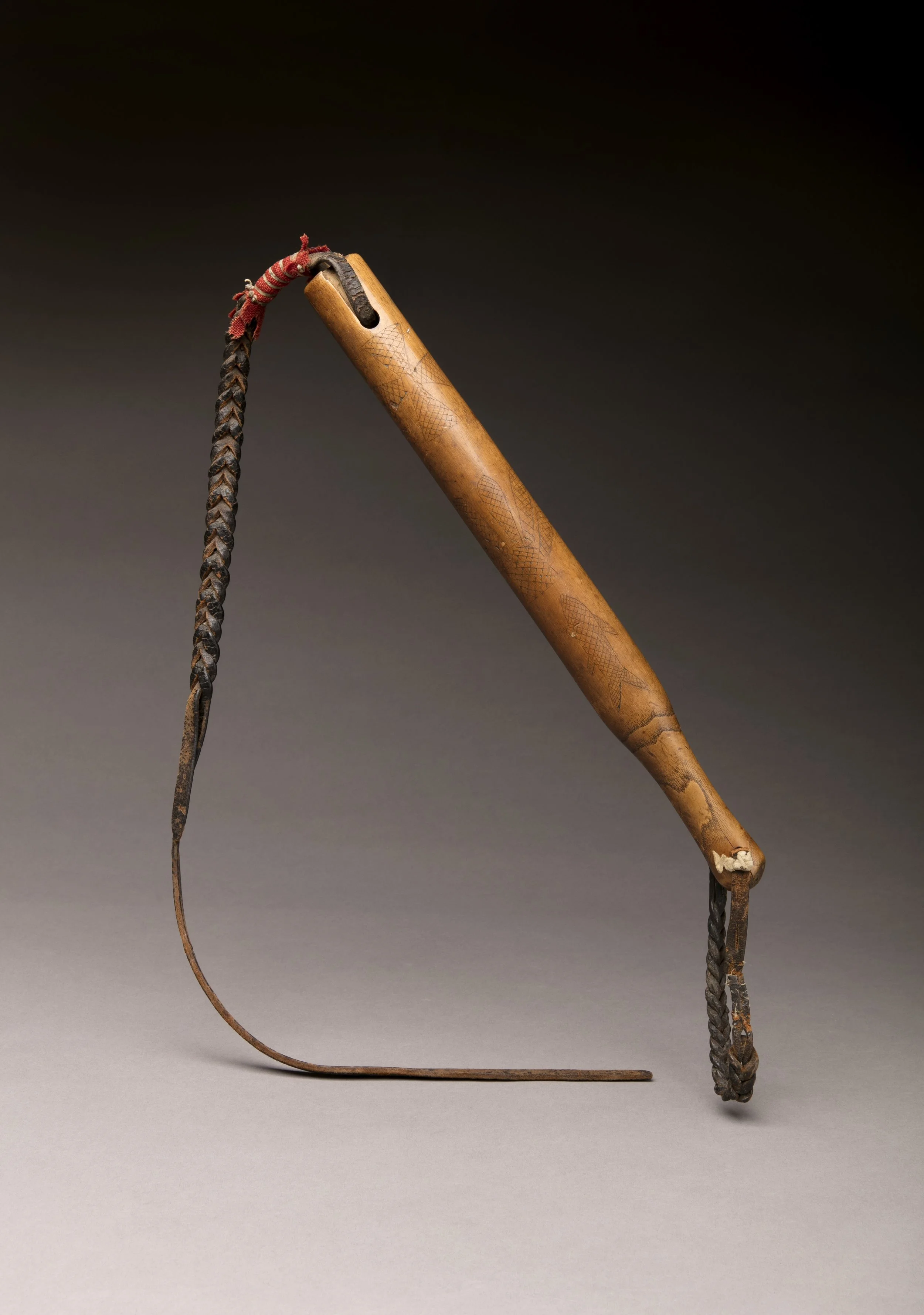Prairie Pictorial Quirt, 1860 / Ex Helene Sage, VA
Horse whips or quirts came to perform a variety of functions on the Great Plains, including counting coup or touching an enemy in battle – an act considered to be the highest form of bravery. Their importance in Plains warrior culture therefore cannot be understated. And, in an ironic way, their popularity rose and fell alongside Plains nomadism.
Some of the most elaborate surviving quirts come to us from the mid-19th century, when elk antlers and recycled wooden objects served as canvases upon which warriors carved extensive programs of symbols. Some markings conveyed the owner’s rank and war honors; others perhaps his spiritual, cosmological or tribal allegiances.
This wooden quirt has many of the hallmarks of celebrated Prairie quirts, including its original wrist strap and lash, which seldom survive. Throughout the handle, there are lightly incised cross-hatched markings. On one side, there is a four-pointed star; an eagle fan or headdress; and a fish. The other side is decorated with a series of bands which frame two opposing hands. While the exact meaning of this arrangement is unclear, these symbols go way back in the Eastern Plains artistic tradition, some even with Great Lakes antecedents. They have deep connections to the hunter/warrior complex formed therein.
15” long (quirt); 27” long (lash); accompanied by a custom stand
Ex Helene Sage, VA, author of Native American Horse Gear: A Golden Age of Equine-Inspired Art of the Nineteenth Century (2012)
#51091
#



